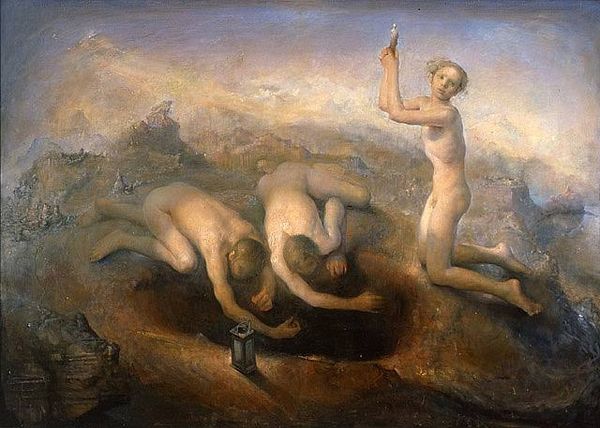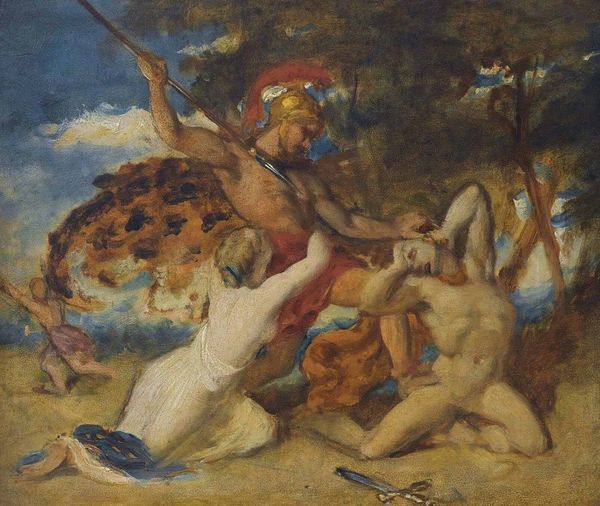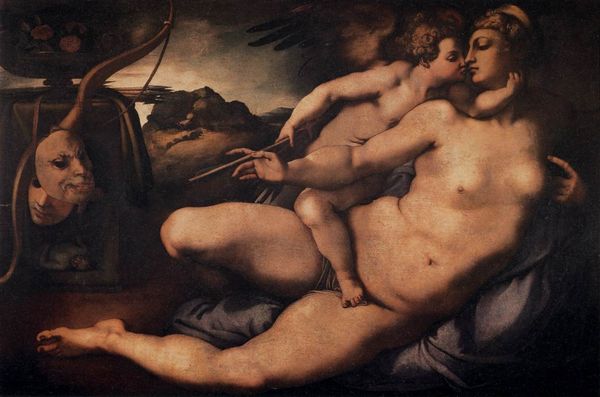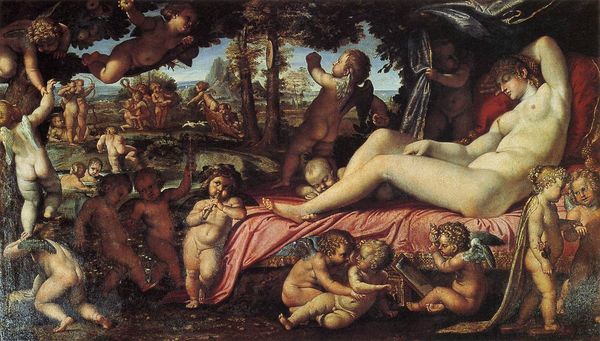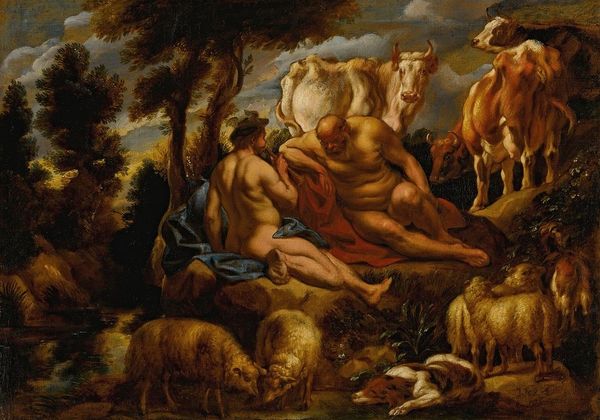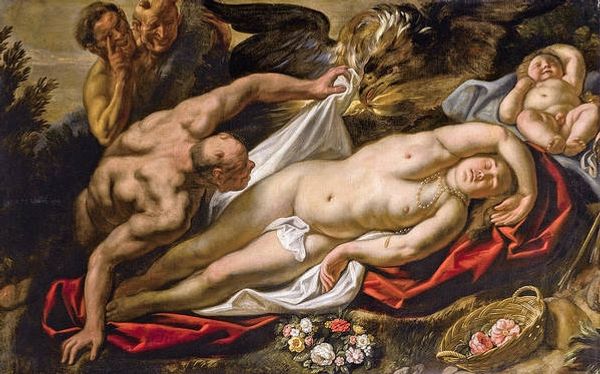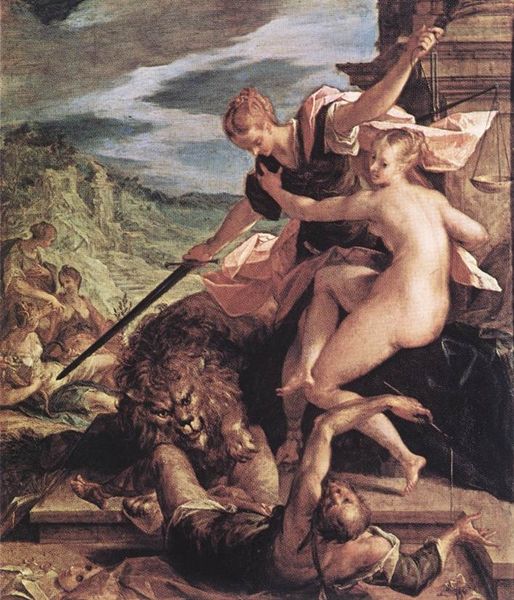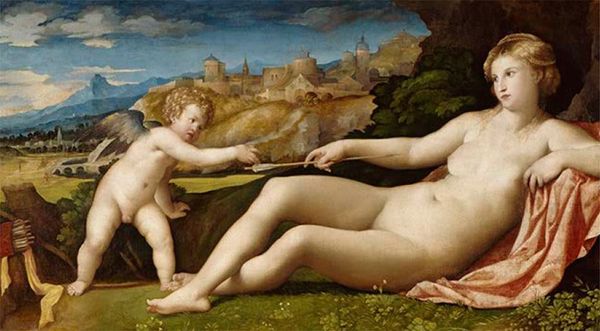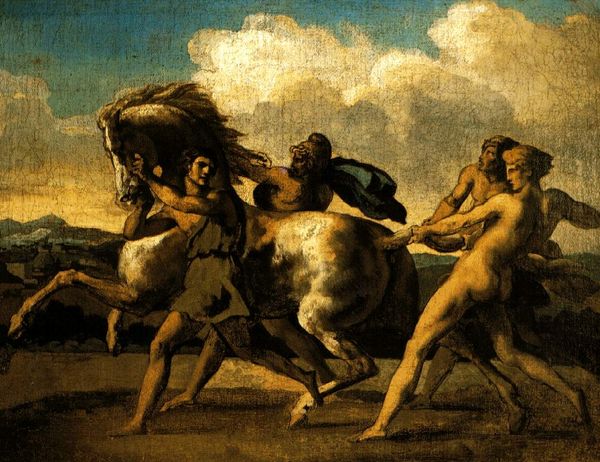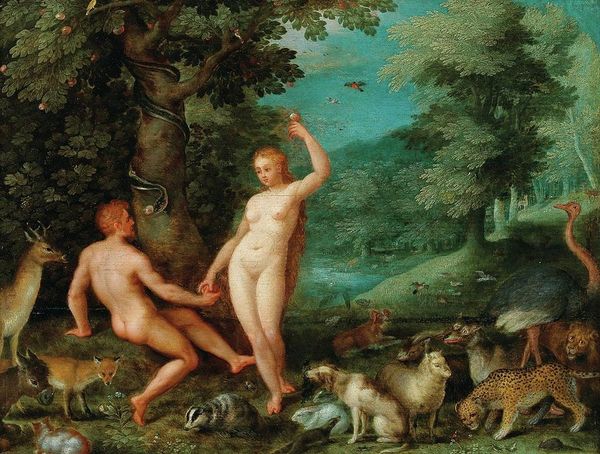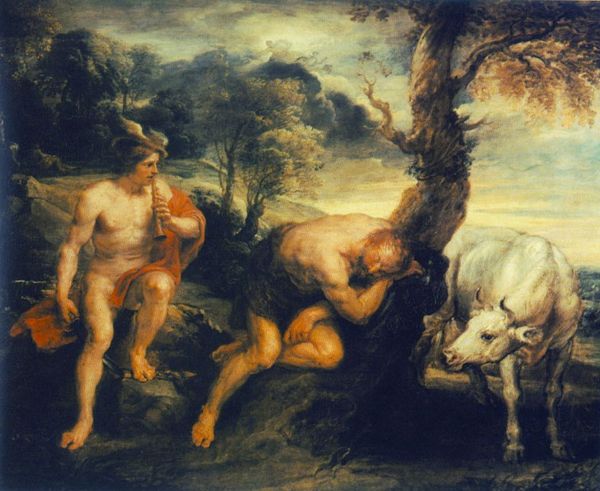
#
abstract expressionism
#
abstract painting
#
impressionist landscape
#
possibly oil pastel
#
oil painting
#
neo expressionist
#
acrylic on canvas
#
underpainting
#
painting painterly
#
expressionist
Dimensions: height 24 cm, width 95 cm, thickness 1.9 cm
Copyright: Rijks Museum: Open Domain
Editor: Here we have Lambert Sustris’ “Nessus and Deianira,” created sometime between 1540 and 1560. The oil painting feels, I don't know, strangely unsettling despite the idyllic landscape. What strikes you about it? Curator: The materiality itself hints at social hierarchies. Oil paint, traditionally associated with high art, is employed here to depict a scene ripe with raw physicality and contested power. Look closely; the underpainting isn't fully obscured. The labor of layering, the visible traces of the artist's hand, points to the very process of constructing narratives – even mythical ones – within a specific economic framework. The cost of materials, the time spent... how does this impact your understanding of the subject matter? Editor: I suppose I hadn’t considered the expense involved. Knowing that impacts the figures’ idealized nudity, the contrast makes me consider what sustained labor went into idealizing leisure, or even violence, like the centaur’s abduction. It gives this seemingly "timeless" myth a context of production. Curator: Precisely. Consider too the consumption of art during that era. Who was the intended audience? Was this commissioned for a wealthy patron? The answers will inevitably be tied to social function of displaying power through artistry, where skill and artistry are a valuable luxury commodity Editor: That’s really fascinating! I guess I’ve been viewing it too much as a self-contained story, without thinking about who was paying for the story to be told, and how those material conditions influenced the telling of it. Curator: Exactly. By questioning the material origins, we uncover the socio-economic frameworks embedded within the artwork, seeing the story not just as myth, but as a constructed product of its time. Editor: I’ll definitely look at paintings differently from now on. Thank you.
Comments
No comments
Be the first to comment and join the conversation on the ultimate creative platform.
